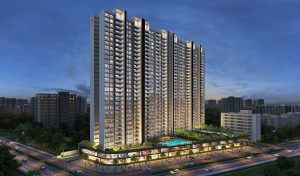Why Air Circulation Matters—Especially in Apartments
Urban apartments and compact homes often have limited windows, smaller living spaces, and structural layouts that restrict airflow. Over time, air grows stale and stagnant, trapping dust, pollutants, odours, and humidity. Rooms begin to feel dull, heavy, and uncomfortable—even after cleaning. Lack of fresh air doesn’t just affect comfort, it impacts concentration, sleep quality, and respiratory health. Good circulation keeps air moving continuously, the same way your body needs movement to stay active. It improves oxygen levels, reduces that “sealed-in” feeling, and gives your home a sense of energy and openness.
Even a gentle breeze can significantly change how you experience a room. When air flows freely, it carries away impurities, refreshes the space, and replaces heavy air with something cleaner and easier to breathe. Whether you live in a high-rise building, a shared apartment, or a compact studio, circulation is key to creating a home that feels alive rather than closed off.
1. Use Fans the Right Way (Not Just for Cooling)
Fans are not just for blowing cool air — they help push air around the entire room. A ceiling air circulator fan or a pedestal fan can keep air constantly moving, especially when placed near windows or doors.
What to do:
- Run a ceiling fan counterclockwise in summer
- Use a table or pedestal fan to push air toward exits
- Pair a fan with an open window for better ventilation
Pro Tip: Air circulator fans are designed to move air in all directions, not just forward.
2. Keep Interior Doors Open
If you ever asked, “how to increase air circulation in room without windows?” — the easiest answer is: don’t lock the air in. Closed doors trap air, especially in small rooms like bedrooms or studies.
Simply keeping doors open allows fresh air to move between spaces, reducing that heavy, tight feeling in closed rooms. It costs no money and takes zero effort — but makes a big difference.
3. Create Cross Ventilation (When Possible)
Cross ventilation is one of the best natural ways to refresh air in a room. If you have windows or openings on opposite sides of a room, open both to allow airflow to enter and exit efficiently.
No windows on opposite walls? You can still mimic this by:
- Opening a door and the nearest window
- Using a fan to pull air in from one side and push it out the other
- Even a light breeze makes a noticeable impact.
4. Install or Use Exhaust Fans
Exhaust fans are crucial for places where moisture and odours build up, such as:
- Bathrooms
- Kitchens
- Windowless bedrooms
- Closets or utility rooms
They pull stale air out and allow fresher air to replace it. If your room doesn’t have one, small wall-mounted or window exhaust fans can be installed with minimal effort.
5. Use Air Circulators or Ventilation Boosters
Regular fans push air in one direction, but air circulators move air throughout the entire room. They break up pockets of stagnant air and distribute airflow more evenly.
Ventilation boosters help airflow in rooms connected to HVAC ducts but still feel stuffy.
Use them if:
Your room has no windows
Air remains still despite fans
You live in a high-rise building
6. Clean Vents, Filters, and AC Units Regularly
You could have the best ventilation system, but if the filters or vents are dirty, air won’t move properly. Dust, lint, and debris slowly reduce airflow and indoor air quality.
Make cleaning part of your routine:
Wash AC filters every month
Dust vents and grills
Service your HVAC or AC twice a year
Cleaner filters = better airflow + less energy consumption.
7. Open Windows (Even for Short Intervals)
Opening windows during the day — even for 10–15 minutes — helps flush out stale air and replace it with fresh air from outside. If the weather is humid or cold, open them partially but consistently.
This simple practice:
Reduces carbon dioxide buildup
Removes microorganisms
Helps boost mood and energy
Even bedrooms benefit from a quick daily air exchange.
8. Bring in Indoor Plants
Plants are not ventilation machines, but they improve air quality and support a healthier indoor environment. Many indoor plants help regulate humidity and absorb pollutants.
Best indoor plants for better air:
- Snake plant
- Spider plant
- Peace Lily
- Areca Palm
- Aloe Vera
Place them near light sources for maximum benefit.
9. Choose Light Fabrics Over Heavy Ones
Thick curtains, large cushions, bulky rugs, and dense beddings trap heat and block air movement.
Replace with:
- Cotton or linen curtains
- Light cushion covers
- Breathable bedding
Sheer or light curtains allow natural airflow while still providing privacy.
10. Consider an Air Purifier
While air purifiers don’t circulate air, they clean it, especially in rooms where airflow is limited. They trap dust, allergens, odours, and bacteria, making the air healthier to breathe.
Use along with ventilation and fans for best results.
How to Improve Air Circulation in a Room with No Windows
This is one of the most common challenges in urban apartments. But yes — it’s possible! Start with these solutions:
1. Use fans to simulate airflow
Place a fan facing the doorway to push stale air out and fresh air in.
2. Pair fans with purifiers
Fans circulate air, purifiers clean it — together, they improve air quality.
3. Keep doors open as much as possible
This creates air pathways from other ventilated parts of the home.
4. Install a small exhaust fan
Even if it leads to a duct or corridor, it still helps pull used air out.
5. Use ventilating ducts or boosters
Especially helpful in bedrooms or study rooms without windows.
Common Mistakes to Avoid When Improving Air Circulation
- Blocking air vents with furniture
- Keeping doors always shut
- Not cleaning filters and vents
- Relying only on air fresheners
- Placing fans too close to walls
- Ignoring humidity control
Most of these are easy to fix but are often overlooked.
A Breathable Home Is a Healthier Home
Improving air circulation isn’t just about making the room cooler—it’s about creating a space where your body and mind can function comfortably. Proper ventilation supports better breathing, clearer thinking, deeper sleep, and overall wellbeing. With the right practices and a little consistency, even the smallest apartment or most enclosed room can feel open and refreshing.
At Confident Group, every home is designed with airflow and ventilation in mind because fresh air is essential for healthy living. By combining thoughtful architecture with everyday circulation habits, you can enjoy a living space that feels lighter, fresher, and more energizing—every single day.
Frequently Asked Questions
1. How do I circulate air in a closed room?
Use fans, keep the door open, add an exhaust fan if possible, and clean air regularly with an air purifier.
2. How can I get airflow in a room with no windows?
Use fans to move air, keep doors open, use purifiers, and create pathways through adjoining rooms.
3. Is poor airflow bad for health?
Yes. Poor airflow leads to moisture, dust buildup, allergies, headaches, and a stuffy atmosphere.
4. What are signs of poor air circulation?
Stale smell, dampness, mold, and excessive dust are clear indicators that air isn’t moving properly.









